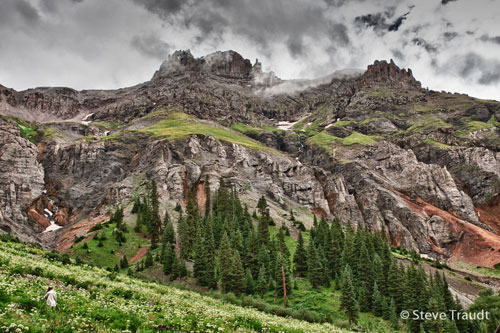A few days ago, Art Morris, the renowned bird photographer, posted on his Blog that digital photography was really easy! Now Art is an amazing photographer and most of us would love to make images like he does so we could perhaps forgive him some hyperbole.
But I have thought about this a lot since I read it and I have come to the same conclusion as he did! There are several factors operating here and please bear with me while I try to make a coherent essay.
At its’ very heart, photography really is not that difficult. The problem of course, is that technology has gotten between ourselves and the creative act of photography. There are only two controls on the camera: aperture and shutter speed. So why does it seem so difficult?
It was actually easier with film. You just made some images and dropped the film off. But with digital, we have all those menus and custom functions and on and on. There are lots more options on a digital camera than we will ever use. But just the presence of those options causes angst. You feel guilty if you don’t understand every bell and whistle. Heck, I teach photo classes for a living and I don’t understand all the options. Nor do I need to.
I think much of the popularity of camera phones and point & shoot cameras is their simplicity. An iPhone for instance, is utter simplicity. There are no controls. It becomes the purest form of photography. All technology is removed; it is just you and your compositional skills.
With a film camera, we had several unknowns. Was the exposure good? Sharp or blurry? Was the background in focus or not? Was the flash filling in the shadows on the faces? We would not know the answer for days.
I think for many of us, especially if we have been at this a while, is that we still have a “film brain”. We are trying to make every shot count; not waste film.
But use the digital camera for the tool it is. Students are always asking me, “what is the right exposure?”. Will the waterfall looked creatively blurred? How much depth of field will there be? The answer, of course, is JUST TAKE A PICTURE, and look at it. Don’t make this harder than it is. The histogram gives you instant feedback on exposure. Look at the LCD screen; magnify it if needed. How does the image look?
Some students tell me that f-stops and shutter speeds are just too complex; too mathematical. Take a photo at f4. Take another at f16. Look at them. Try 1/15 of a second. Try 1/1000. Which do you like better? This is not rocket science. Learn on the job.
Driving a car down the street is much harder than taking photos. Think of all the decisions you are making while you drive; all the data you are processing (or should be). And you even talk on your cell phone and apply makeup while driving! The key of course, is that you drive your car every day. You have driven every day since you were 16. If you used your camera EVERY day, you would soon master it. The camera needs to become second nature, like driving is. The camera is just a stupid box that lets light in.
Art and I share a common love: Bosque del Apache. I bought my first dSLR in October of 2002. Two months later I visited Bosque for the first time. I never had even tried to be a bird photographer. With film it would have taken me years and lots of dollars and I probably would not have had the patience anyway. That first day at Bosque, I made my first exposure at 4:03 PM. By 6:00 I was back in the motel room, drinking a beer and reviewing about 300 shots. Most of them were horrible. A few were pretty good. I gave myself a class that night. By the time I hit the pillow, I knew what shutter speeds I needed to maintain. I realized
my backgrounds were out of control. I saw my histograms being consistently underexposed. That next morning, I went out full of confidence and made some great images. Digital accelerated the learning process a hundred-fold. I even felt guilty how easy it was.
So let’s stop with the “photography is hard and I am confused” already! Hitting a fastball is hard. Playing a piano is hard. Photoshop is hard! Running a camera is easy.
David Lyman, founder of the Maine Photo Workshops, once wrote an essay in which he said it takes 10 years to get good at something. Really good. With film that was certainly true. With digital, we can compress the technical learning and get down to the business of “making” photographs much sooner. It still may take 10 years but most of that time can be devoted to the art of photography, not the craft.
So here is my challenge to you:
- Don’t buy a new camera for at least 2 years.
- Make pictures at least every week, without fail.
- Understand histograms.
- Use a tripod.
- Get a Hoodman loupe to study your LCD screen in the field
- Shoot Raw.
- Learn to use Lightroom.
- Check out books by Ansel Adams; John Sexton; Paul Strand, Eugene Weston, Cartier-Bresson & Georgia O’Keefe.
- Listen to Dvorak’s 9th Symphony while studying the books.
- Drink some red wine. Think about the images. Feel the images.
- Go to Bosque del Apache.
- Be happy.
Optional: (if you have the guts)… sell all your camera equipment. Buy an iPhone.


